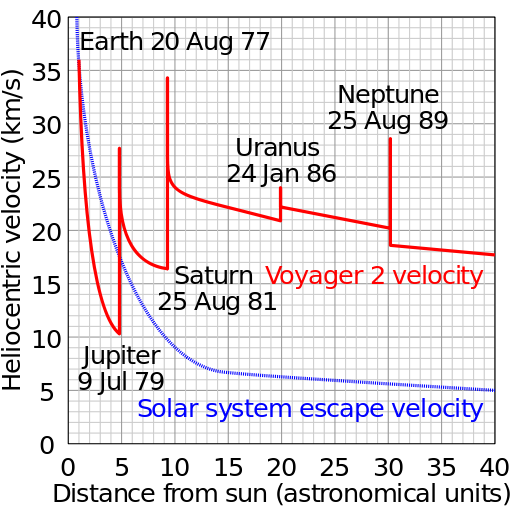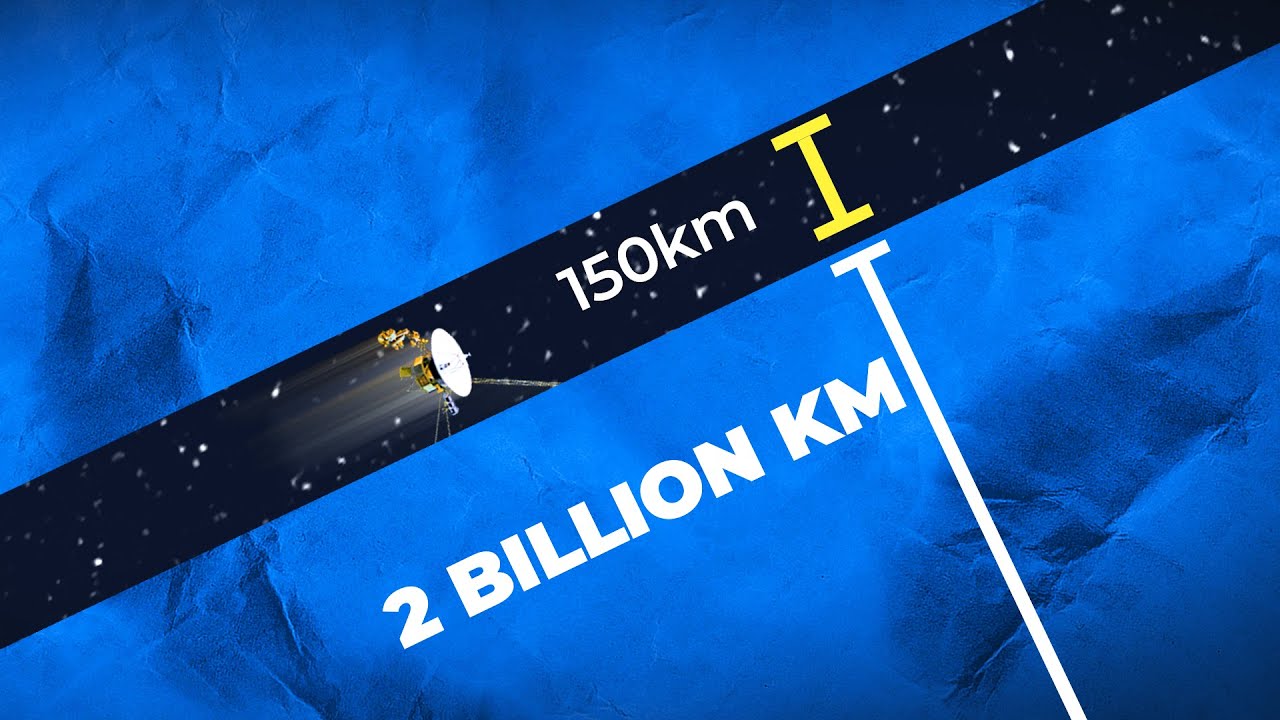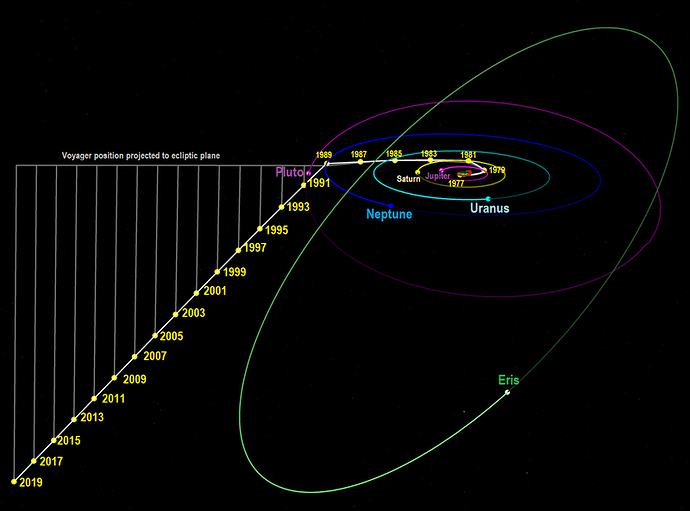Voyager 2’s first gravity assist at Jupiter on 1979-07-09 raised its heliocentric velocity to 34 km/sec, well above solar system escape velocity. Subsequent encounters with Saturn, Uranus, and Neptune gave it initial boosts, but it would have escaped the solar system even if none of these fly-bys had occurred.

Chart by Wikimedia user Cmglee, CC BY-SA 3.0 https://creativecommons.org/licenses/by-sa/3.0, via Wikimedia Commons.
Orbital plot by Wikimedia user Tomruen, CC BY-SA 4.0
https://creativecommons.org/licenses/by-sa/4.0, via Wikimedia Commons.
4 Likes
I hadn’t known about Eris and its orbital angle to the ecliptic.
When it comes to gravity assist, my intuition tells me the spacecraft must be traveling in the same direction that the planet is orbiting the sun. Were it to travel in the opposite direction my fallible sense of orbital mechanics suggests it would slow down. Correct?
2 Likes
That’s right. If you pass from behind the planet in its orbital direction, you’re accelerated as the planet pulls you toward it; if you pass in front of it, you are decelerated. The least expensive way in terms of delta-v to get close to the Sun is to first fly out to Jupiter and then pass in front of it to kill most of your orbital velocity, lowering the perihelion to the desired distance close to the Sun. The Ulysses solar probe used this technique in 1992 to change its heliocentric inclination from close to zero to 80.2°.
In Kerbal Space Program, this is the only way to get to Moho (the Mercury analogue in the Kerbol system) without using a monster rocket. You go out to Jool and use a gravity assist to slow the craft down for a close encounter at Moho, where you then do a gravity assist with it to help lower your aphelion to go into Moho orbit.
2 Likes


